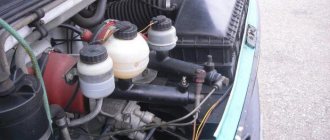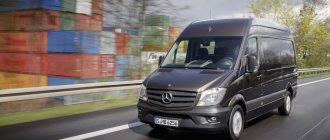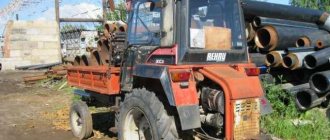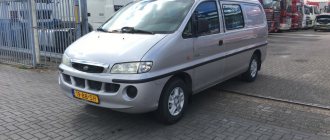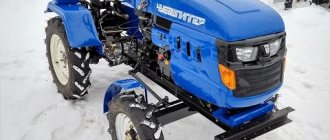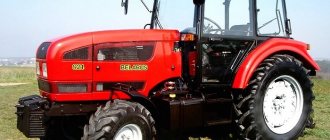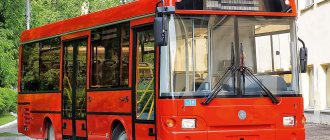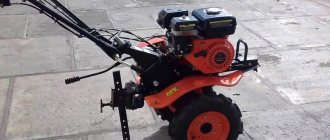Perhaps the most famous German five-ton car is the Mercedes Atego. However, due to the crisis situation, many carriers are considering cheaper purchasing options. If you need a reliable German five-ton truck for 6-10 thousand dollars, you should pay attention to the Mercedes 814. In Russia, this machine is used quite actively. By the way, it was on the basis of the 814 that Atego was built. Let's look at the Mercedes 814 reviews, technical characteristics, design and interior.
“Indestructible” Mercedes Vario 814
Mercedes-Benz Vario is a special example of the line of light-duty cars from Daimler Benz AG, which successfully combines and complements each other with good visibility, ease of operation, versatility of use, with sufficient load capacity (up to 4.4 tons) or van volume (more than 17 cubic meters) . One of the Vario models is the Mercedes-Benz 814, which has adopted almost all the positive features of its parent model. By the way, it was on the basis of the Mercedes-Benz 814D Vario that the most famous 5-ton Mercedes 813 Atego was created. And partly the subsequent line of medium and heavy Mercedes trucks, such as Zetros, Unimog and Axor.
Mercedes-Benz 814
The Mercedes-Benz 814D is a multifunctional, light-duty, rear-wheel drive vehicle (an all-wheel drive version was also produced for operation in harsh climatic conditions). With a manual transmission, easy to drive and quite powerful truck with a frame structure. The MB 814D is the most atypical truck in the Mercedes-Benz truck line. It comes in a variety of variants, although it has become widely known with its voluminous all-metal van-type body. Also, the M-Benz 814 Vario is assembled both as a chassis and as a bus, including with a high roof.
On the Mercedes 814 (like the MB Axor), mounting holes are drilled in 5 cm increments, which makes the process of reinstalling attachments and/or additional equipment a quick and low-cost affair. This is a hard-working machine that does not pretend to be sophisticated, but with proper care it works out its service life completely and even beyond that. It is not surprising that the 814 Vario model has gained the reputation of an “indestructible” truck. Which, with not too much power from its engine, worked conscientiously and efficiently even when the road surface was not very good, giving a head start to more powerful and, according to technical plans, more “passable” cars.
For three years until 1998, the Mercedes 814D EcoPower model with a 136 l/s engine was produced, including “long lengths”, which together with the trailer contained more than 100 cubic meters of space, with a curtain-type body, as well as refrigerators. Their main feature was compliance with Euro-3 environmental standards. At this date, the production of all modifications of the Mercedes 814 ceased, but they are quite widespread and in demand in those countries where the simple price-quality ratio, as well as fuel consumption, are more important than ecology and prestige, and in this matter the Mercedes 814 Vario will give, as they say, a hundred points ahead of many modern truck models.
Model range of tow trucks based on Mercedes
The range of tow trucks based on Mercedes - Benz includes:
Mercedes-814
This modification is equipped with turbocharging and an air cooling system for the working fluid. Inside the driver's cabin there is a heating device and a ventilation system for comfortable work in both summer and winter.
Technical parameters of Mercedes-Benz 814 (tow truck):
| Mercedes maximum load capacity | 3900 kg |
| Wheel formula of a tow truck | 4*2 |
| Full mass | 7000 kg |
| Fuel tank volume | 70 l |
| Outer overall turning radius | 6700 mm |
| Wheelbase | 3700 mm |
| Dimensions | Length - 6300 mm Width - 2210 mm Height - 2700 mm |
| Average fuel consumption | 18 l per 100 km |
| Displacement of the power unit | 4.25 l |
| Piston stroke | 113 mm |
| Environmental standard | Euro-3 |
| Rated torque | 520 Nm |
| Cylinder diameter | 102 mm |
| Engine power | 152 horsepower |
| Compression ratio | 17,4 |
| Number of cylinders | 6 |
| Ground clearance distance | 320 mm |
| Operating temperature | -25°…+35°С |
| Reverse | Eat |
The 709D model is equipped with a special cargo platform with a hydraulic manipulator. It is equipped with disc, dry, friction brake mechanisms, a spacious driver's cabin and fog lights.
Technical indicators and parameters of modification 709D:
| Total number of wheels | 4 |
| Number of driving wheels | 2 |
| Total vehicle weight | 6600 kg |
| Maximum weight of transported cargo | 2460 kg |
| Front drive axle load | 1400 kg |
| Pressure exerted on the rear cart | 1060 kg |
| Curb weight | 4140 kg |
| Highest transport speed | 100 km/h |
| Engine power | 85 horsepower |
| Number of transmission gears | 5 |
| Tire size | R16/5 |
| Fuel tank volume | 150 l |
| Environmental standard | Euro 2 |
| Winch cable length | 20000 mm |
| Size | Length - 6800 mm Width - 2050 mm Height - 2100 mm |
| Clearance | 262 mm |
| Track | Front wheels - 1880 mm Rear wheels - 1790 mm |
| Cylinder diameter | 110 mm |
| Piston stroke | 114 mm |
| Number of motor acts | 4 |
The 408D tow truck model is supplied with a manipulator and a sliding platform. The steering mechanism is equipped with a hydraulic booster, disc brakes and turbocharging. Diesel fuel is used here, the cylinder arrangement is in-line.
Technical data and parameters:
| dimensions | 5620*1990*2135 mm |
| Wheelbase | 3550 mm |
| International environmental standard | Euro-3 |
| Engine displacement | 2.15 l |
| Engine speed | Up to 2600 rpm |
| External turning radius | 12800 mm |
| Maximum driving speed | 119 km/h |
| Diesel fuel container | 76 l |
| The largest weight of transported cargo | 2720 kg |
| Curb weight | 1900 kg |
| Torque | 200 Nm |
| Number of cylindrical elements | 4 |
| Compression ratio | 19 |
| Gross vehicle weight | 4600 kg |
| Number of gears | 5 |
| Piston stroke | 110 mm |
| Cylinder diameter | 113 mm |
| Operating temperature | -25°…+35°С |
| Ground clearance | 300 mm |
| Track | 1990 mm |
Mercedes-813
Modification 813 runs on diesel fuel. The design of the vehicle includes disc brakes, turbocharging, a manual transmission and a powerful four-stroke power unit.
Characteristics and parameters of model 813:
| Engine displacement | 4.25 l |
| Engine power | 129 horsepower |
| Wheelbase | 3700 mm |
| Maximum engine speed | 2200 rpm |
| Rated torque | 520 Nm |
| Total number of cylinders | 4 |
| Diameter of cylindrical parts | 102 mm |
| Piston stroke | 130 mm |
| Fuel fluid container | 110 l |
| Capacity for liquid cooling system | 27 l |
| Average diesel consumption | 22 l per 100 km |
| Number of gearbox gears | 6 |
| Curb weight | 7410 kg |
| Load capacity | 3100 kg |
| Front axle load | 2000 kg |
| Pressure on the rear cart | 1100 kg |
| Working temperature | -20°…+35°С |
| Track | Front wheels - 1880 mm Rear wheels - 1790 mm |
| Winch pull | 4.1 t |
| Rope length | 20000 mm |
The 608 D modification is also used for transporting various cargoes and transporting broken cars to the place of repair work. The equipment is equipped with a five-speed gearbox and a powerful engine.
Indicators and parameters:
| Mercedes maximum load capacity | 2700 kg |
| Wheel formula | 4*2 |
| Number of seats in the cabin | 2 |
| Full mass | 6800 kg |
| Fuel tank volume | 85 l |
| Outer overall turning radius | 5700 mm |
| Wheelbase | 3550 mm |
| Dimensions | Length - 6100 mm Width - 2110 mm Height - 2500 mm |
| Average fuel consumption | 22 l per 100 km |
| Displacement of the power unit | 3.75 l |
| Piston stroke | 114 mm |
| Environmental standard | Euro 2 |
| Rated torque | 475 Nm |
| Cylinder diameter | 104 mm |
| Engine power | 98 horsepower |
| Compression ratio | 18,4 |
| Number of cylinders | 4 |
| Ground clearance distance | 276 mm |
| Operating temperature | -25°…+35°С |
| Reverse | Eat |
Sprinter
The Sprinter modification has a number of advantages, for example, it has a galvanized sliding platform, which helps protect vehicles during prolonged operation in low temperatures. The platform itself is securely fixed, and the floor has an anti-slip coating.
Technical parameters of the Sprinter model:
| Total number of wheels | 4 |
| Number of driving wheels | 2 |
| Total vehicle weight | 5000 kg |
| Maximum weight of transported cargo | 1890 kg |
| Front drive axle load | 2700 kg |
| Pressure exerted on the rear cart | 2300 kg |
| Curb weight | 6100 kg |
| Highest transport speed | 115 km/h |
| Engine power | 100 horsepower |
| Number of transmission gears | 5 |
| Tire size | 7.00-16R |
| Fuel tank volume | 110 l |
| Environmental standard | Euro 2 |
| Winch cable length | 20000 mm |
| Size | Length - 4850 mm Width - 2090 mm Height - 2000 mm |
| Clearance | 260 mm |
| Track | On the front wheels - 1780 mm On the rear wheels - 1690 mm |
| Cylinder diameter | 104 mm |
| Piston stroke | 100 mm |
| Number of motor acts | 4 |
Atego
This model is produced on the basis of Atego cars. It is equipped with a galvanized all-metal platform, which is controlled using a winch mechanism.
Technical data and characteristics:
| Engine displacement | 4.24 l |
| Engine power | 180 horsepower |
| Wheelbase | 3000 mm |
| Maximum engine speed | 2700 rpm |
| Rated torque | 520 Nm |
| Total number of cylinders | 4 |
| Diameter of cylindrical parts | 102 mm |
| Piston stroke | 102 mm |
| Fuel fluid container | 106 l |
| Capacity for liquid cooling system | 29 l |
| Average diesel consumption | 17 l per 100 km |
| Number of gearbox gears | 5 |
| Curb weight | 7000 kg |
| Load capacity | 3050 kg |
| Front axle load | 2100 kg |
| Pressure on the rear cart | 950 kg |
| Track | Front wheels - 1880 mm Rear wheels - 1880 mm |
| Winch pull | 4.1 t |
| Rope length | 20000 mm |
Exterior
The design of the Mercedes 814 fits perfectly into the harsh requirements of the middle of the last decade of the last century. At that time, angular forms with sharp, broken and memorable features dominated. The time of eco-design, with its sleek, smoothed outlines, has not yet arrived.
A high-strength steel two-door cabin with a large, one might say huge, windshield with 3 “windshield wipers” and large, prominent mirrors, one of which shows the “dead” zone. A massive black bumper, with a radiator grille of the same color, “gills” for blowing dirt off the doors and the same branded star. The roof is available in both regular and “high” versions. The frame can be used to install regular, including tilt, and special bodies (for example, for towing cars), all-metal and other vans, a minibus body, and so on.
Interior
The 814 cabin can accommodate a maximum of 3 people, and in some modifications there is also a sleeping place behind the seats. The inside of the cabin is quite spacious, but cozy, and the thoughtful arrangement of all truck controls allows the driver not to strain too much at the workplace.
In driving the Mercedes-benz 814 truck, electronic systems are practically not used and its operation is simply outrageous. The steering mechanism has a 2-spoke, fairly large steering wheel, power steering and a ball joint. An ergonomic “dashboard” and a seat with a pneumatic drive; an analogue tachograph is installed on top. The navigator is easily located on the dashboard. For an additional fee, the cabin can be equipped with a berth and an independent heater.
The level of sound insulation in the cabin is quite good. But you can’t do without additional heating in cold winter. Since the cabin glazing area is very large. The electrical wiring is very reliable.
Chassis
Three-leaf springs are installed in the front part, and a half-spring with cushions in the rear. A high-quality single-stage rear axle is equipped with a hypoid gear and is characterized by low noise, durability and ease of maintenance. The power line of the Mercedes-Benz 814 truck can be equipped with different sets of gear ratios, which ensures efficiency in any task.
Ease of movement and stability are due to the installation of parabolic springs and maintenance-free hinges with a pre-stressed elastic rubber unit.
Return to content
Engines
As standard, the MB Vario 814 was equipped with a Mercedes diesel engine model OM904LA, which has the following characteristics - a 4-cylinder with 12 valves with a volume of 4.25 liters and a power of 152 horsepower and 2.2 thousand revolutions per minute. Subsequently, it was equipped with very reliable and invulnerable engines of the same volume. But the nine hundredth series has different powers of 122 hp, 136 hp and 170 horsepower. Subsequent modifications of the more “weighty” Mercedes 814 cars were equipped with significantly more powerful turbocharged engines (240 l/s, capacity 6 liters), with direct fuel supply and equipped with an intercooler.
Design Features
There are many modifications of this power unit. Here are some examples, some of them:
- The Mercedes-Benz OM 366.999 engine with a power of 231 hp appeared in January 1991.
- Mercedes-Benz OM 366.902 engine (129 horsepower), which appeared in January 1992;
- 136-horsepower Mercedes-Benz OM 366.905 engine, which appeared in March 1984 - 2/1993;
- engine Mercedes-Benz OM 366.901 (185-240 horsepower);
- Mercedes-Benz OM 366.906 engine with 139 horsepower, which appeared in April 1984;
- oM 326.903 Mercedes-Benz engine with 129 horsepower, introduced in January 1992;
- oM 366.904 Mercedes-Benz engine with 129 horsepower, introduced in January 1992;
The cylinder block of the OM 366 engine was completely filled with cast iron. The cylinder head was made of aluminum alloy. The turbine is used as a power amplifier. It also has forced air cooling.
The OHV cylinder head features excellent valve placement. Thanks to this arrangement, the fuel mixture is consumed evenly, and exhaust gases are removed completely. Increased combustion efficiency of the fuel mixture provides high engine power.
OM366 engines achieve an ideal thermal balance thanks to the overhead valve arrangement. Thanks to this innovation, the cylinders do not collapse or lose their shape.
This engine has been produced since 1984. The year the production of OM 366 power units ended was 1993.
Mercedes-Benz 814 technical specifications
Mercedes-Benz Vario 814 D is characterized by the following indicators:
- Country of origin: Germany
- Production - structure of the Daimler AG-Mercedes-Benz holding company
- Body and cabin type - cargo, wheel arrangement 4*2, rear-wheel drive
- Number of seats - 2 or 3
- Engine - diesel, in-line, six-cylinder, 12-valve, 4.25 liters. With turbocharging and intercooler, 136 horsepower and speed 1400 N/m
- Fuel tank and fuel consumption - 70 liters. With an average consumption of 16-18 liters per 100 km
- Length - 6.33 m
- Height - 2.7 m
- Width - 2.2 m
- Weight - 7 t
- Load capacity - 3.9 t
- Optimal speed - 70 km/h
- Transmission - manual five- or six-speed
- Brake system - disc
- Wheels and tires - 6.00×205, 215/75R17.5
- Turning radius - 6.7 m
- Compliance with environmental standards - Euro-3 class
Mercedes Vario 814 in new condition is a rarity, therefore it is estimated at 2-3 million rubles. M-Benz 814 trucks that have been in service for decades, depending on the actual condition and year of manufacture, cost from 200 thousand rubles. up to 700 thousand rubles. Thus, the price for an MB 814 tow truck manufactured in 1993 is about 0.5 million rubles.
Brake system
Depending on the type of machine, modification and type of superstructure, the following systems are installed:
- ABS and all disc brakes;
- ABS and front disc, rear drum brakes.
The braking system operates on a dual circuit, which maintains a pressure of 10 bar. This ensures a shorter braking distance for the Mercedes-Benz 814 and increased driving safety.
Return to content
Recommendations
Comments 60
The best car in its segment. The engine is very reliable, I don’t even know what needs to be done to damage it. No sore spots have been noticed over 5 years of operation. It will take you anywhere. Cheap and cheerful. My consumption was approximately 16-18 liters. The only thing is that in winter I started it from the air.
exactly what I want to look at is that diesel fuel consumption is from 20 and above, but there is a tail lift and as I understand the owner does not drive it, but the driver, maybe of course the driver told him that the consumption is 20+
I also had one on board. Maybe the carrier is leaking. He shouldn't eat so much
I had 1114, a clean five-ton truck, and the wheels were 19.5, and not 17.5 like the 814, it was a 4-ton truck, and to carry five tons, you had to lie under it) The engine was OM366 without a turbo, a perpetual motor, it didn’t consume oil, If you take in consumption that from replacement to replacement the remainder from the canister is 20 liters. and this is 4 liters for 25 thousand. I didn’t breathe, the diesel fuel consumption is 18 liters, whether empty or loaded. but 139 horses is certainly not enough, OM366LA is the best option. The car is a hard worker, reliable, but with such a carrying capacity no one needs it now.
1114 is very big for me, and they won’t pay for its cost (((or they will try to load it under 8 T
1114 is not 8 tons, it’s pure 5 tons.
You have a lot of delicious specimens in your country!
who knows, I'm definitely not doing well with work)
What the hell to look at with such oil consumption. Every engine with mileage has the right to burn oil, but 2 liters per thousand. This is evil. why take this?
I have the same one, only a turbo engine, the consumption is always 20, in winter in summer, empty and loaded - 20. The oil starts to leak after 15k miles, so I change it every 15k. 366 turbo engine without intercooler. You have the same one here, but not the turbo one.
Its consumption is 18-25. I had a tow truck, city consumption 20/22, highway 16/18, the booth will eat 1-2 liters more. The engine is like a Kalashnikov assault rifle, killing is a feat. Box, axles, chassis... reliable as a brick. The only thing that is missing is the interior door handles). Oil consumption for a live engine is 1-2 liters per 10t.km. Regarding such a car with a 904 engine, the consumption is 3-4 liters less than the 366, both pull + the same. And of course, the 904 has a turbine and electronics, although in principle it doesn’t really matter.
Review of faults and methods for repairing them
Piston scuffing can be a common problem with a similar OM 366 engine. This happens because they use low-quality fuel and other fuels and lubricants. Infrequent changes of filter devices lead to scuffing. As a result, particles of dirt and waste elements enter the system, between the pistons and cylinder walls and lead to scuffing during operation of the power unit.
If you do not pay attention to scuffing for a long time, or rather do not attend maintenance where these problems are clarified, then the malfunction will lead to the destruction of the pistons and valves.
Due to the harsh winters of Russia and poor-quality lubricant, the OM 366 high-pressure fuel pump becomes unusable. Before it completely stops working, the driver of a car with an OM 366 engine can hear and see the following malfunctions:
- Unstable engine operation at idle;
- reduced power;
- there is a lot of lubricating fluid in the pan;
- noise when the engine is running.
The OM 366 engine may stop when running at low speeds. All this indicates a malfunction in the fuel injection pump. When contacting experienced mechanics, the pump has already become unusable and therefore all that remains is to replace it.
If it's time to change the liners, they are honed. These are dry cartridges. They do not have direct communication with the engine cooling. When the cylinders fail, the liners are thermally placed inside the block. The block is heated and the cartridges are cooled in liquid nitrogen. Thus, the diameter of the cylinder pockets increases, and the liner itself decreases in size. Experienced mechanics do not recommend doing the loosening in the garage or on your knee. It is better to give it to experienced mechanics at a service center, since there are many subtleties in the work that the average engine owner may not know about.
Other problems with a diesel engine:
- timing belt rupture;
- oil starvation. A common problem with careless drivers;
- problems with glow plugs;
- breakdown of the turbine or turbocharger.
The worst thing that can happen on the road is a belt break. Then the valves and cylinders will be in trouble, because the belt destroys them and presses them inward. In this case, no repair will help, only a complete replacement of the engine in the car.
Turbine breakdowns most often occur when the engine operates under extreme conditions. When working in atmospheric conditions, such problems are not observed. Experienced mechanics do not recommend turning off the OM diesel engine immediately after putting the car in the garage. It is recommended to let it idle for five minutes. Because during a sudden shutdown, the turbine experiences a powerful shock.
Replacing a turbocharger is expensive. And in some cases, repair may simply be impossible. Therefore, try to do without the engine while it is running.
Design
Commercial vehicles should not have a special appearance. The main advantage of this car is reliability. The design of the Mercedes 814 truck is typical for those years (remember, the car was produced in the mid-90s). The French Midliner and the Swedish Volvo FL series had the same angular shapes. The Mercedes-Benz 814 had various chassis modifications. However, the cabin design remained unchanged.
The windshield of the Mercedes 814 truck is quite large. To clean it, two rather than three wipers are used. The Mercedes 814 has very large mirrors. Reviews from owners say that they are quite informative and provide a complete picture of what is happening on the road. In addition, there is another mirror on the top of the cabin (passenger side). It allows you to see the so-called dead zone. Cars often sneak up under this side. With such a mirror you can see a passenger car and prevent an accident.
Cost of new and used
A 07/10 truck will cost 1.4 million rubles. and more depending on the configuration and mileage. It is impossible to find new cars on the modern market, because... they are not released. As an improved analogue, the manufacturer offers its own product - Atego 815.
The price of a Mercedes 814 per shift is 3,200 rubles.
The great demand for equipment is due to the following advantages:
- maneuverability;
- efficiency;
- ease of control;
- a large number of optional units;
- security;
- fast and high-quality maintenance;
- power.
Return to content
Salon
The interior design is typical of the 90s. The panel is simple, but at the same time ergonomic. The same torpedo design can be seen on Vario cargo ships. The steering wheel is two-spoke, with a very large diameter. Therefore, in order not to turn the steering wheel, many drivers install a “lazy” or “sloth”.
The driver's seat is moderately rigid and has a pneumatic drive. The handbrake (which is also air brake) is located on the front panel. Next to it is the headlight control: dimensions, high and low beam. The instrument panel is readable and informative. Additionally, an analog tachograph (under the “puck”) was installed on these trucks.
Due to the flat floor, the cabin is quite spacious. However, there is no sleeping space in the cabin. To travel comfortably over long distances, you have to install an over-roof sleeping bag. This pleasure costs about a thousand dollars. Also, not all modifications of the Mercedes 814 are equipped with autonomy. Separately, this heater costs from 700 to 1 thousand dollars (if you take Webasto or Ebersprecher). However, you can now find trucks on sale with both a sleeping bag and an autonomous vehicle. Such cars are fully adapted for long-distance driving.
List of car models on which the engine was installed
OM 366 was installed on the following Mercedes car models:
- Installed on these and many other modifications from Mercedes. Swap with diesel engines for GAZ, Nissan, Ford, Hyundai is also possible.
Attention! The turbine from the 366 is not suitable for the 364 power unit, because the OM 366 is larger than the previous engine in the model. Therefore, many who try to tune and increase engine power using a powerful and larger turbine from the 366 suffer some difficulties.
Mercedes 814: technical specifications
The truck was equipped with both 4- and 6-cylinder units. And since the Mercedes 814 is a commercial vehicle, all engines were diesel. The first unit has a working volume of 4 liters. It develops 105 horsepower. Installed on early versions of Mercedes 814 trucks.
Seven- and ten-ton modifications were equipped with higher-torque diesel engines of 240 hp. With. The working volume of such a unit is 6 liters.
How is the vehicle built?
The main characteristics of the car include reliability and long trouble-free operation. The design is fully consistent with the trends in the engineering industry of its time - with angular shapes and sharp lines.
The radiator grille of the Mercedes 814 truck is painted black and has the manufacturer’s logo on it. It is mounted on a powerful bumper. Headlights and turn signals are also installed here. Along the edges of the grille there are “gills” that prevent dirt from sticking to the door.
The design of the load-bearing part was developed taking into account operating conditions; it consists of two sections. At the front there is a pair of inclined side members with a zigzag profile. This allows for displacement. In the low-frame version, one step is installed for access to the cabin, and the space between the side members is used to install the main units and modules.
The mounting holes on the frame of the Mercedes-Benz 814 are drilled in 50 mm increments, which makes it easy to install a superstructure, an additional fuel tank, a muffler, or a battery.
Return to content
814th after 1996
Since 1996, three new engines have appeared in the line. With the same volume of 4.25 liters, they produced different power. The first developed 122 horsepower, the second unit was designed for 136 horsepower, the maximum power of the third engine was 170 horsepower. All these engines belonged to the 900 series. Owner reviews say that diesel engines of this brand are very durable. Practice shows that this engine can be operated for up to a million kilometers without major overhaul. The Mercedes 814 combines a lot of positive qualities that a practical truck should have.
By the way, it was on the “nine hundredth” engines that the new fuel equipment with the Unit Pump pumping section was first used. This made it possible to reduce fuel consumption by 7 percent and make the engine quieter. All power units on the Mercedes 814 complied with Euro-2 emission standards. And 4-cylinder engines were equipped with turbocharging. The turbine is cooled by air (a separate heat exchanger is provided for this - an intercooler).
Replacement frequency
Maintenance data
Air filter replacement interval
every 2 years
Fuel filter replacement interval
to transport means with number K 049 999 (W?rth plant), to transport. products with number N 822 749 (Ludwigsfelde plant), (0.5 liter capacity) At every 2nd preventative maintenance.
starting from transport products with number K 050 000 (W?rth plant), starting from transport. products with number N 822 750 (Ludwigsfelde plant), (capacity 0.5 liters)
With every preventative maintenance.
to transport means with number K 049 999 (W?rth plant), to transport. products with number N 822 749 (Ludwigsfelde plant), capacity 1 liter
At every 3. preventative maintenance.
starting from transport products with number K 050 000 (W?rth plant), starting from transport. products with number N 822 750 (Ludwigsfelde plant), capacity 1 liter
At every 2. preventative maintenance.
Brake fluid change interval
every 2 years
Engine Coolant Change Interval
every 3 years
Transmission oil change interval
At every 2. preventative maintenance.
Automatic transmission oil change interval
At every 2. preventative maintenance. to transport means with number K 049 999 (W?rth plant), to transport. means with number N 822 749 (Ludwigsfelde plant), Allison checkpoint
at least once a year
Reviews
Why is this truck actively used in Russia? Many carriers love it for its reliability. The machine has a fairly simple structure. It is convenient to operate. Drivers speak positively about the braking system.
As for the shortcomings, first of all, owners note the lack of steering wheel adjustment. The second disadvantage is the long wheelbase. The car is afraid of snowdrifts - in winter you have to constantly carry chains and a shovel with you. The fuel is quite reliable. The electronics do not glitch like on the new Atego. The Mercedes 814 truck can be equipped with both leaf spring and air suspension. The first option is more common. Reviews from owners note that the car overcomes bumps more smoothly than the Atego (even with leaf spring suspension).
The 814 is also equipped with an ABS system. However, she did not live to this day in a Mercedes. There is also a rear axle lock (electric, controlled from the passenger compartment). This is a very useful feature that allows you to cope with snow drifts. Among the competitors of the 814th model, carriers highlight the 45th “Daf”. This is also a very simple and reliable “horse”.
Development of the OM series
New OM601 engine Mercedes diesel units have remained reliable and durable since that time. A unique design brought to perfection, a huge reserve of strength and materials of excellent quality are the calling card of this power unit. On the other hand, according to fuel consumption, specific gravity and dynamics, this internal combustion engine is inferior to analogues from other companies.
It is noteworthy that the second generation of OM series engines was released in 1961. It was a 2-liter OM621. After another 7 years, OM615 comes out with a working volume of 2 and 2.2 liters.


